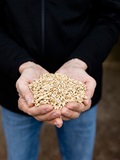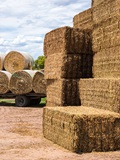North Coast NSW
20 May 2020
| Date | N NSW 23 | N NSW 22 | N NSW 5YA |
|---|---|---|---|
| 06-Jan-23 | 369 | 230 | 327 |
| 13-Jan-23 | 383 | 230 | 327 |
| 20-Jan-23 | 400 | 230 | 340 |
| 27-Jan-23 | 415 | 230 | 340 |
| 03-Feb-23 | 415 | 230 | 340 |
| 10-Feb-23 | 415 | 230 | 354 |
| 17-Feb-23 | 415 | 230 | 344 |
| 24-Feb-23 | 415 | 230 | 334 |
| 03-Mar-23 | 415 | 230 | 334 |
| 10-Mar-23 | 418 | 230 | 342 |
| 17-Mar-23 | 418 | 230 | 349 |
| 24-Mar-23 | 418 | 230 | 349 |
| 31-Mar-23 | 420 | 230 | 349 |
| 07-Apr-23 | 420 | 230 | 349 |
| 14-Apr-23 | 420 | 230 | 349 |
| 21-Apr-23 | 420 | 230 | 344 |
| 28-Apr-23 | 420 | 230 | 344 |
| 05-May-23 | 420 | 230 | 344 |
| 12-May-23 | 420 | 230 | 344 |
| 19-May-23 | 420 | 230 | 344 |
| 26-May-23 | 420 | 230 | 344 |
| 02-Jun-23 | 420 | 230 | 344 |
| 09-Jun-23 | 415 | 230 | 344 |
| 16-Jun-23 | 413 | 230 | 334 |
| 23-Jun-23 | 410 | 230 | 324 |
| 30-Jun-23 | 390 | 230 | 324 |
| 07-Jul-23 | 380 | 230 | 329 |
| 14-Jul-23 | 363 | 230 | 331 |
| 21-Jul-23 | 345 | 230 | 351 |
| 28-Jul-23 | 340 | 230 | 351 |
| 04-Aug-23 | 330 | 305 | 366 |
| 11-Aug-23 | 330 | 305 | 376 |
| 18-Aug-23 | 330 | 305 | 376 |
| 25-Aug-23 | 330 | 305 | 406 |
| 01-Sep-23 | 330 | 305 | 406 |
| 08-Sep-23 | 305 | 396 | |
| 15-Sep-23 | 300 | 390 | |
| 22-Sep-23 | 300 | 383 | |
| 29-Sep-23 | 300 | 375 | |
| 06-Oct-23 | 300 | 366 | |
| 13-Oct-23 | 300 | 361 | |
| 20-Oct-23 | 305 | 361 | |
| 27-Oct-23 | 305 | 359 | |
| 03-Nov-23 | 307 | 359 | |
| 10-Nov-23 | 308 | 351 | |
| 17-Nov-23 | 313 | 336 | |
| 24-Nov-23 | 315 | 334 | |
| 01-Dec-23 | 315 | 331 | |
| 08-Dec-23 | 315 | 330 | |
| 15-Dec-23 | 320 | 331 | |
| 22-Dec-23 | 330 | 333 | |
| 29-Dec-23 | 356 | 339 |
Notes:
Change in price is the change since the last report. Hay quoted is sourced and delivered locally, GST exclusive unless stated otherwise. It should be noted that local prices quoted may not be the cheapest available, sourcing it from another region may be more affordable, and buyers are encouraged to evaluate all options. Prices are indicative to a mid-range shedded product, and based on the best indication of market value at the time of reporting. It should be noted there is a wide variation in quality of hay, prices for a mid-range product will not reflect the weighted average of trade. Prices will naturally vary based on the product quantity and quality, buyer/seller relationship and the size of the trade.The hay report has been commissioned by Dairy Australia to provide an independent and timely assessment of hay markets in each dairy region. This report is created using data provided by the Australian Fodder Industry Association (AFIA). It should be remembered that actual prices may vary for quality or other reasons. Whilst all reasonable steps have been taken to ensure the accuracy of the information contained in this report, Dairy Australia disclaims all liability to the fullest extent permitted by Australian law for any inadvertent errors and for any losses or damages stemming from reliance upon its content. Dairy Australia recommends all persons seek independent advice and, where appropriate, advice from a qualified advisor before making any decisions about changes to business strategy.
Commentary
- Moderate to heavy falls across the region over the last week, with most areas seeing high rainfall totals. Some areas have reported double or more of their annual rainfall in the first 9 months of the year. Colder temperatures are also being reported.
- Considerable road damage and a lack of housing remain of significant concern in the region. The inability for many to access consistent or ongoing assistance to recover is causing significant issues throughout the flood affected areas.
- Many paddocks are now inaccessible due to the ongoing rain and riverine flooding that has occurred. Concerns around yield quality and the future return on many crops are at front of mind for many growers.
- Flood-affected farmers can call the Department of Primary Industries’ emergency hotline on 1800 814 647 to request assistance or further information can be accessed through the online portals:
- https://www.nsw.gov.au/floods
- https://www.service.nsw.gov.au/floods/financial-assistance
- Demand for hay has quietened on account of the continuing rain and flooding. Most either have no hay for sale or if they do, are having issues moving supplies due to road closures or damage. Donations are still supplying a fair portion of the market but are being accepted at whatever quality can be obtained.
- No change to pricing this week.
- Cereal hay: +/-0 ($260 to $340/t). Prices steady this week.
- Lucerne hay: +/-0 ($400 to $550/t). Prices steady this week.
- Straw: +/-0 ($110 to $220/t). Prices steady this week.
- Pasture hay: +/-0 ($200 to $280/t). Prices steady this week.
- Please note: Cereal hay, straw, and lucerne prices should be considered as a bookmark rather than a reflection of the local trade due to the reliance on donations and current conditions. We recommend feed testing and viewing of fodder before purchase to be sure of the quality of feed.

